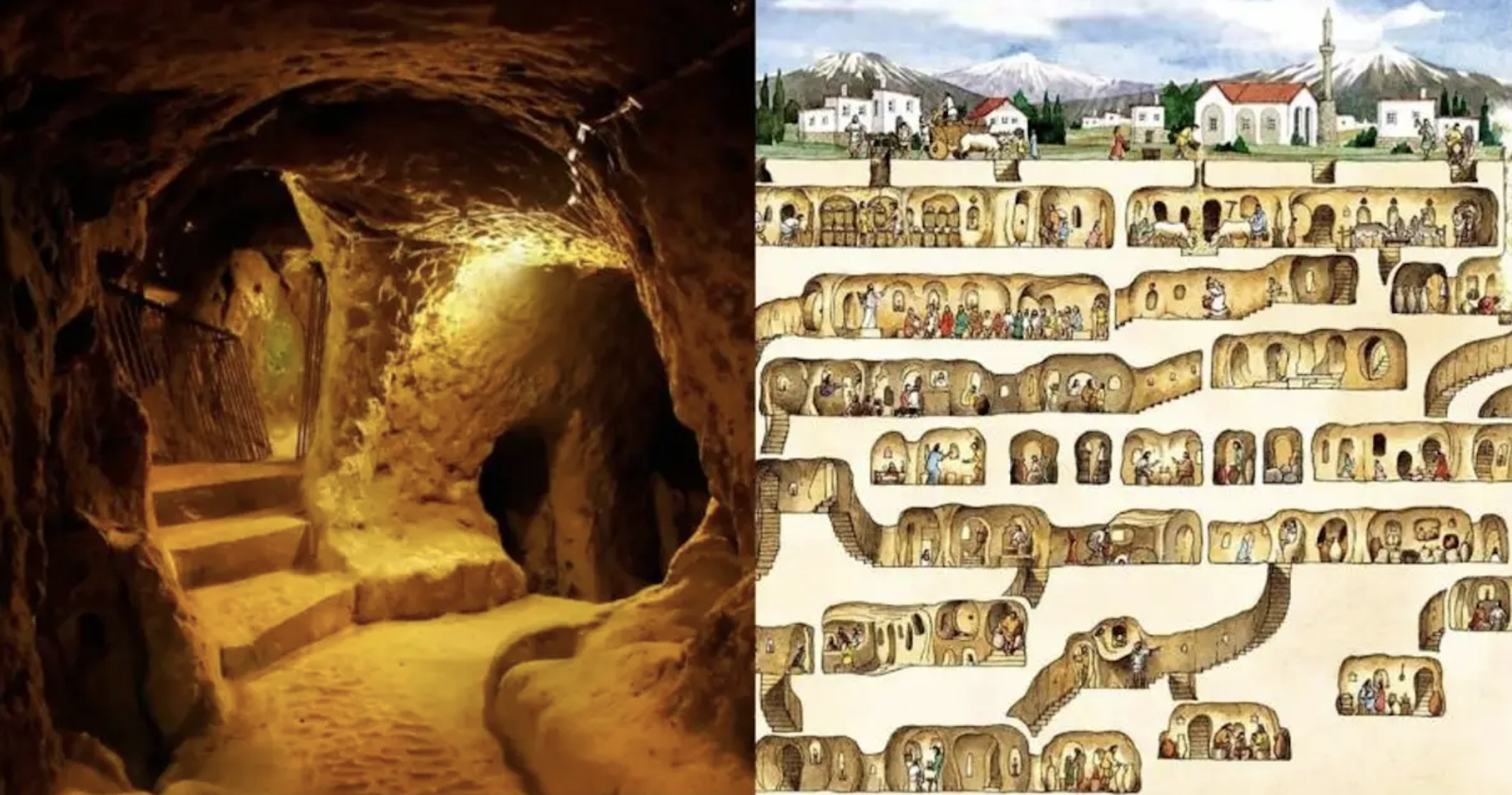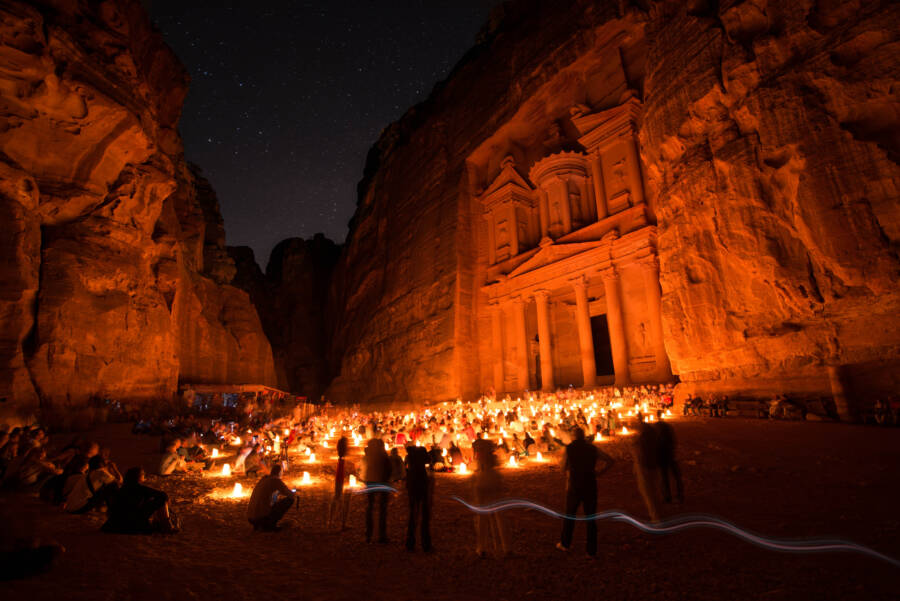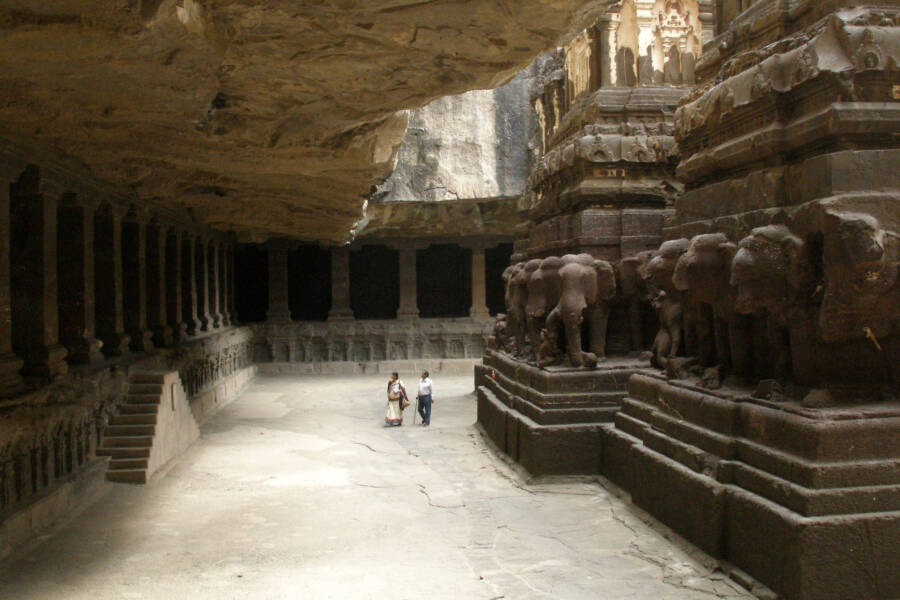Explore mysterious underground cities
Few people would expect that underneath where we are standing are sometimes cities deep underground and once home to thousands of people.
1. Derinkuyu - Underground metropolis of ancient Türkiye
Known as Derinkuyu, this underground city lies less than 90 meters underground, consists of 18 floors, has a vast network of labyrinthine tunnels and was once home to 20,000 people. Although its exact origin and purpose remain unknown, the Turkish Ministry of Culture estimates that construction of the city began about 2,800 years ago, by a group of people known as the Phrygians, an Indian people. -Europe since the Iron Age, famous for its architectural talent.
Derinkuyu was almost forgotten for a long time, until it was rediscovered in 1963. At that time, during a house renovation, a Turkish man accidentally removed the wall on the first floor. tunnel and discovered that there was a large room behind that wall. That room is the place connected to the Derinkuyu labyrinth.
2. Matiate: The world's largest underground city
Surprisingly, Derinkuyu is not Türkiye's only underground city. In 2022, while cleaning the streets and buildings in the historic town of Midyat, a group of Turkish conservationists stumbled upon a cave entrance that led down to a massive complex of dozens of streets. basement and nearly 50 rooms. Gani Tarkan - the project's main excavator said: "This is a city that is 1,900 years old and could have been home to up to 60,000 or 70,000 people. But at that time, the excavation team Only about 3% of this underground city has been discovered." Excavations have taken place since 2022, but until now Matiate's full size and much of its history remain a mystery.
Gani Tarkan - the project's main excavator said: "This is a city that is 1,900 years old and could have been home to up to 60,000 or 70,000 people. But at that time, the excavation team Only about 3% of this underground city has been discovered." Excavations have taken place since 2022, but until now Matiate's full size and much of its history remain a mystery.
3. Underground city in Orvieto, Italy
Historians believe that in ancient times, the Etruscans (ancient Italian civilization) founded a city called Velzna on top of an extinct volcano. This position gives them superior defense capabilities, but has the weakness of having difficulty accessing water sources. To overcome this situation, the Etruscans dug deep wells and cisterns to collect rainwater on the slopes and also helped them withstand the Roman siege for nearly two years. However, in 264 BC, the Romans prevailed and the city eventually fell. The Romans then saw the potential in what the Etruscans were doing, and they continued deep underground. Above, the city of Orvieto continued to grow and rise, but beneath the soil, its inhabitants dug tunnels to serve different purposes; includes: shelters, quarries, caves and galleries
The Romans then saw the potential in what the Etruscans were doing, and they continued deep underground. Above, the city of Orvieto continued to grow and rise, but beneath the soil, its inhabitants dug tunnels to serve different purposes; includes: shelters, quarries, caves and galleries
A total of about 1,200 structures have been discovered under the city of Orvieto and perhaps this number will no longer increase, because this place has now officially banned any further tunneling activities under the city. underground or archaeological activities.
4. Petra, Jordan: Ancient city carved in sandstone
Petra is a large city carved directly into sandstone cliffs in southwestern Jordan, once the capital of the Nabataean empire. At its peak, from 400 BC to 106 AD, Petra was a thriving center of commerce and culture, but was sadly abandoned for many centuries. According to National Geographic, archaeologists found evidence that Nabataean people inhabited Petra since at least 312 BC. But since the Nabataean empire fell to the Romans in 106 CE, Petra was forgotten and gradually fell into decay. In addition, earthquakes in the area also caused damage to the city located in the cliff.
According to National Geographic, archaeologists found evidence that Nabataean people inhabited Petra since at least 312 BC. But since the Nabataean empire fell to the Romans in 106 CE, Petra was forgotten and gradually fell into decay. In addition, earthquakes in the area also caused damage to the city located in the cliff.
Over time, the world gradually forgot about Petra. It wasn't until the early 1800s that a European traveler visited the ancient site and made it widely known again. In 1985, the Petra Archaeological Park was declared a UNESCO World Heritage Site and named is the new wonder of the world in 2007.
5. Coober Pedy underground city in Australia
Coober Pedy is the most special city on this list, because unlike many other underground cities in the world that have been abandoned for a long time, Coober Pedy is still home to about 3,500 people of 45 different nationalities. until today. Most of its residents are descendants of Europeans who arrived in the 20th century, hoping to make money from gems. About 150 million years ago, Coober Pedy was a vast ocean bed where tides brought minerals from the sandstone seabed into the cracks of the Earth. Over millennia, the silica deposits left there gradually hardened, creating thousands of opals that remain in the rock. Eventually, a huge opal mine was created in the area and the town of Coober Pedy was officially established in 1915.
About 150 million years ago, Coober Pedy was a vast ocean bed where tides brought minerals from the sandstone seabed into the cracks of the Earth. Over millennia, the silica deposits left there gradually hardened, creating thousands of opals that remain in the rock. Eventually, a huge opal mine was created in the area and the town of Coober Pedy was officially established in 1915.
The first residents voted to name their town Coober Pedy, derived from the Aboriginal term kupa-piti, meaning “white man in a hole”.
6. Ellora cave city in India
Ellora Caves are a series of 34 stone temples in western India, located near the village of Ellora. Each temple here is carved directly into the basalt cliffs, except the Kailasa temple which was built by digging directly from the slope, to let more natural sunlight shine into the cave. Kailasa Temple is named after the mountain in the Kailasa range of the Himalayas - said to be where the Hindu god Shiva is said to reside. A total of 12 Buddhist-style temples dating from around 200 BC to 600 CE, 17 Hindu temples in the center of the caves dating from 500 to 900 AD and 5 Jain temples The religion dates back to around 800 to 1000 AD.
A total of 12 Buddhist-style temples dating from around 200 BC to 600 CE, 17 Hindu temples in the center of the caves dating from 500 to 900 AD and 5 Jain temples The religion dates back to around 800 to 1000 AD.  The style and design of the temples in the Ellora cave area are often consistent with the culture of their builders. For example, Hindu caves have much more elaborate designs than Buddhist caves.
The style and design of the temples in the Ellora cave area are often consistent with the culture of their builders. For example, Hindu caves have much more elaborate designs than Buddhist caves.































